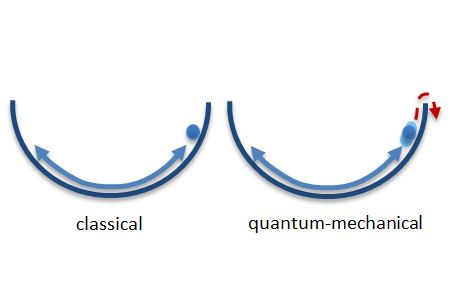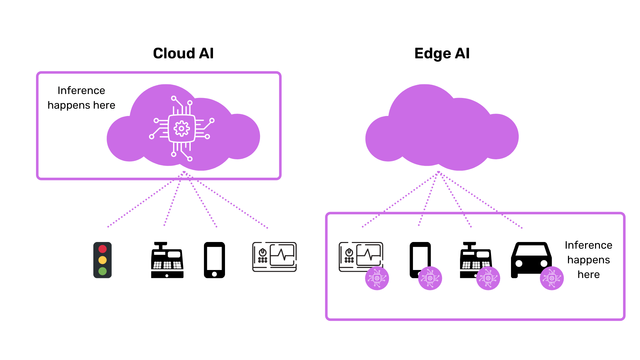
To help us understand the world better, there are many kinds of AI. Brain-inspired and inference-based computation are among them. Both use a combination neural networks and machine-learning. Many methods are used to assist the system in performing its tasks more efficiently. These methods are known as the pillars in AI computing. This new technology will ultimately help us to better understand the world and make our lives easier.
In-memory computation
AI technology is constantly evolving, so the von Neumann Architecture will need to evolve. Its current implementation depends on increasing storage capacity as well as CPU capacity. This is incompatible with AI. In-memory computing will reduce both the size and cost of data storage and access. Because computations take place directly in memory, accessing data will be much easier. Here are the benefits of in-memory computing for AI:

In-memory computation is the fastest way for complex tasks to be completed on a small computer. Large activation coefficients may cause bottlenecks. Control engineers are well aware that efficient design means avoiding costly functions. In-memory compute architectures need enough memory to handle the highest activation coefficients. This is vital to embedded artificial intelligence. This means the CPU can only do a tiny fraction of what is in the memory.
Inference-based computation
AI inference deployments' success depends on the architecture that is used. Although inference-based computation is faster than traditional computing it has its own challenges. Balance efficiency and power consumption are key factors in the performance of AI workloads. In-memory computing is a natural choice from a technological perspective, but at-memory compute addresses specific AI inference challenges. Below are key features of inferencebased computing.
Inference-based calculation involves a backwards chaining process. The engine cycles through three steps, match, select and execute. Matching rules adds new facts to the knowledge base. The process of selecting rules requires searching for antecedents that match the goals. Back chaining searches for antecedents that satisfy goals. Here's an example of how an inference engine cycles through these steps:
Brain-inspired computation
Developed from the principles of natural evolution, brain-inspired computation aims to create computational systems that mimic the mechanisms that make the human brain work. Brain-inspired computation seeks to mimic the brain's cognitive abilities and coordination mechanisms as well as overall intelligence. These systems may be implantable or wornable and can have a significant effect on the environment. First, let's talk about brain-inspired computation. And how can it improve computer science?

The Semiconductor Research Corporation's (SRC), funded the Center for Brain inspired computation at Stanford University for five-years. The company supports research programs in universities, which link industry and academia to develop innovative and early results to advance technology. It also trains highly skilled workers in the semiconductor industry. The CBIC researchers are optimistic that this ambitious goal will bring about significant advancements in computer sciences. While brain-inspired computing chips may eventually lead the way to an intelligent and autonomous system, the Center's work remains in its infancy.
FAQ
What are some examples AI applications?
AI is used in many fields, including finance and healthcare, manufacturing, transport, energy, education, law enforcement, defense, and government. Here are just some examples:
-
Finance - AI is already helping banks to detect fraud. AI can identify suspicious activity by scanning millions of transactions daily.
-
Healthcare – AI is used in healthcare to detect cancerous cells and recommend treatment options.
-
Manufacturing - AI can be used in factories to increase efficiency and lower costs.
-
Transportation – Self-driving cars were successfully tested in California. They are now being trialed across the world.
-
Utilities can use AI to monitor electricity usage patterns.
-
Education - AI is being used for educational purposes. Students can use their smartphones to interact with robots.
-
Government – AI is being used in government to help track terrorists, criminals and missing persons.
-
Law Enforcement-Ai is being used to assist police investigations. Detectives can search databases containing thousands of hours of CCTV footage.
-
Defense - AI systems can be used offensively as well defensively. Offensively, AI systems can be used to hack into enemy computers. Artificial intelligence can also be used defensively to protect military bases from cyberattacks.
How does AI work?
To understand how AI works, you need to know some basic computing principles.
Computers store information on memory. Computers interpret coded programs to process information. The code tells a computer what to do next.
An algorithm refers to a set of instructions that tells a computer how it should perform a certain task. These algorithms are usually written in code.
An algorithm could be described as a recipe. A recipe might contain ingredients and steps. Each step may be a different instruction. An example: One instruction could say "add water" and another "heat it until boiling."
How does AI impact work?
It will revolutionize the way we work. We will be able automate repetitive jobs, allowing employees to focus on higher-value tasks.
It will enhance customer service and allow businesses to offer better products or services.
This will enable us to predict future trends, and allow us to seize opportunities.
It will help organizations gain a competitive edge against their competitors.
Companies that fail AI adoption are likely to fall behind.
Why is AI important
In 30 years, there will be trillions of connected devices to the internet. These devices will include everything, from fridges to cars. The Internet of Things is made up of billions of connected devices and the internet. IoT devices and the internet will communicate with one another, sharing information. They will also be able to make decisions on their own. A fridge may decide to order more milk depending on past consumption patterns.
It is estimated that 50 billion IoT devices will exist by 2025. This is a great opportunity for companies. This presents a huge opportunity for businesses, but it also raises security and privacy concerns.
Statistics
- That's as many of us that have been in that AI space would say, it's about 70 or 80 percent of the work. (finra.org)
- The company's AI team trained an image recognition model to 85 percent accuracy using billions of public Instagram photos tagged with hashtags. (builtin.com)
- More than 70 percent of users claim they book trips on their phones, review travel tips, and research local landmarks and restaurants. (builtin.com)
- While all of it is still what seems like a far way off, the future of this technology presents a Catch-22, able to solve the world's problems and likely to power all the A.I. systems on earth, but also incredibly dangerous in the wrong hands. (forbes.com)
- Additionally, keeping in mind the current crisis, the AI is designed in a manner where it reduces the carbon footprint by 20-40%. (analyticsinsight.net)
External Links
How To
How to configure Alexa to speak while charging
Alexa is Amazon's virtual assistant. She can answer your questions, provide information and play music. You can even have Alexa hear you in bed, without ever having to pick your phone up!
Alexa can answer any question you may have. Just say "Alexa", followed up by a question. With simple spoken responses, Alexa will reply in real-time. Alexa will improve and learn over time. You can ask Alexa questions and receive new answers everytime.
Other connected devices can be controlled as well, including lights, thermostats and locks.
Alexa can also be used to control the temperature, turn off lights, adjust the temperature and order pizza.
Alexa to Call While Charging
-
Step 1. Step 1. Turn on Alexa device.
-
Open Alexa App. Tap Settings.
-
Tap Advanced settings.
-
Select Speech Recognition
-
Select Yes, always listen.
-
Select Yes, you will only hear the word "wake"
-
Select Yes, then use a mic.
-
Select No, do not use a mic.
-
Step 2. Set Up Your Voice Profile.
-
You can choose a name to represent your voice and then add a description.
-
Step 3. Test Your Setup.
Say "Alexa" followed by a command.
For example, "Alexa, Good Morning!"
Alexa will reply to your request if you understand it. For example, John Smith would say "Good Morning!"
Alexa will not reply if she doesn’t understand your request.
After making these changes, restart the device if needed.
Notice: If the speech recognition language is changed, the device may need to be restarted again.